Related Research Articles

Papermaking is the manufacture of paper and cardboard, which are used widely for printing, writing, and packaging, among many other purposes. Today almost all paper is made using industrial machinery, while handmade paper survives as a specialized craft and a medium for artistic expression.

Archibald David Constable was a Scottish publisher, bookseller and stationer.

Apsley was a 19th-century mill village in the county of Hertfordshire, England. It is a historic industrial site situated in a valley of the Chiltern Hills. It is positioned below the confluence of two permanent rivers, the Gade and Bulbourne. In an area of little surface water this was an obvious site for the location of water mills serving local agriculture. Today it is a suburb of the larger town of Hemel Hempstead.

A paper mill is a factory devoted to making paper from vegetable fibres such as wood pulp, old rags, and other ingredients. Prior to the invention and adoption of the Fourdrinier machine and other types of paper machine that use an endless belt, all paper in a paper mill was made by hand, one sheet at a time, by specialized laborers.
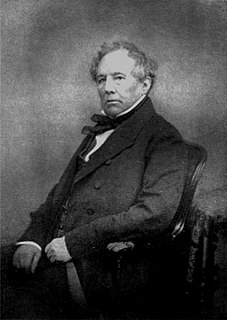
John Dickinson invented a continuous mechanised papermaking process. He established in 1809 the English paper and stationery producer Longman & Dickinson, which later evolved into John Dickinson Stationery Limited.
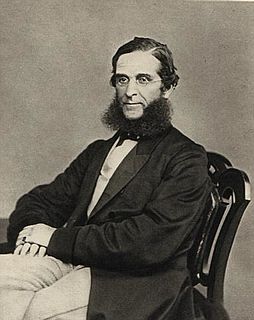
Sir John Evans was an English archaeologist and geologist.
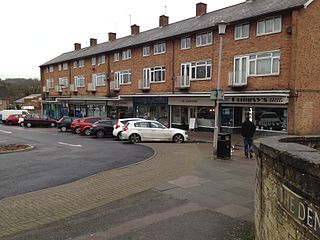
Nash Mills is a civil parish within Hemel Hempstead and Dacorum Borough Council on the northern side of the Grand Union Canal, formerly the River Gade, and in the southernmost corner of Hemel Hempstead. There is evidence of a mill in this location since the 11th century and the row of 16th century mill cottages still remain. John Dickinson established a number of papermaking mills in the area in the 19th century.

John Dickinson Stationery Limited was a leading English stationery company founded in southwest Hertfordshire. In the 19th century, the company pioneered a number of innovations in papermaking. It became part of Dickinson Robinson Group in 1966; after changes of ownership, the John Dickinson brand was retired in 2008.

Terry's is a British chocolate and confectionery maker, formerly based in York, England until 2005, and re-established in 2019 as Terry's Chocolate Co and based in London. The company was founded in 1767. The company's headquarters and factory, Terry's Chocolate Works, was closed by Kraft in 2005. Their best known products include Terry's Chocolate Orange, and Terry's All Gold box of assorted chocolates.

Lieutenant-Colonel James Burton was the most successful and imperative property developer of Regency and Georgian London. By the time of his death in 1837, Burton had built over 3000 properties, and his buildings covered over 250 acres of central London. His imperative contribution to the development of the West End has been acknowledged by James Manwaring Baines, John Summerson, and Dana Arnold. Steen Eiler Rasmussen, in London: The Unique City, commended Burton's buildings, but did not identify their architect. The 21st century Oxford Dictionary of National Biography contends that Burton was 'the most successful developer in late Georgian London, responsible for some of its most characteristic architecture'.

The Crane and Company Old Stone Mill Rag Room is one of the oldest surviving buildings of Crane & Co., one of the oldest papermaking businesses in Berkshire County, Massachusetts. It is located in southwestern Dalton, on a site where paper has been manufactured since the early 19th century. The building, originally used for processing rags, has housed the Crane Museum of Papermaking since 1930, and was designated a National Historic Landmark in 1983.
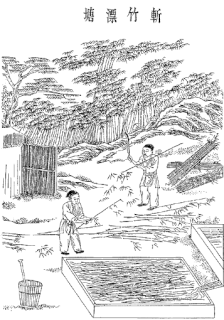
Paper is thin nonwoven material traditionally made from a combination of milled plant and textile fibres. The first ancient paper-like plant based sheet to be used for writing and drawing was papyrus in Egypt, The first actual plant-puree-conglomerate based papermaking process was documented in China during the Eastern Han period traditionally attributed to the court official Cai Lun. During the 8th century, Chinese papermaking spread to the Islamic world where Chinese paper being superior; it replaced papyrus, and wood and stone inscriptions, where pulp mills and paper mills were used for papermaking and money making. By the 11th century, papermaking was brought to Europe. By the 13th century, papermaking was refined with paper mills utilizing waterwheels in Spain. Later European improvements to the papermaking process came in the 19th century with the invention of wood-based papers.
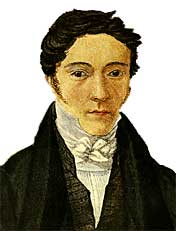
Nicolas Louis Robert was a French soldier and mechanical engineer, who is credited with a paper-making invention that became the blueprint of the Fourdrinier machine.
Andrew Strahan (1749–1831) was an MP and printer who served as the King's Printer.

The technique of sizing a warp was mechanised during the nineteenth century when William Radcliffe and his assistant Thomas Johnson invented the sizing machine. The purpose of introducing size, which is either a starchy substance for cotton or gelatinous mixture for woollen fibre, is to reduce the chances of threads fraying and breaking due to the friction of the weaving process. The size stiffens the thread and helps the fibres lie closely together. Many recipes for size can be found in textile manufacturing books. The recipes include flour, sago, china clay, types of soap, fats and some chemicals.
Events from the year 1803 in Scotland.

Wansbrough Paper Mill was a paper mill located in the town of Watchet, Somerset, when it was the UK's largest manufacturer of coreboard.
Joshua Gilpin was an American paper manufacturer from Philadelphia. Along with his brother, Thomas Gilpin, Jr. and his uncle Miers Fisher, he established the first paper manufacturing business in Delaware in 1787 at the Brandywine Village. In 1804, he introduced the technique of chemically bleaching paper-stuff from England to the United States.
J & E Hall is an English manufacturer of refrigeration equipment. It was originally established as an iron works in Dartford, Kent in 1785, with products including papermaking machines, steam engines and gun carriages, before it started producing refrigeration machinery in the 1880s. During the early 20th century, the company diversified to produce commercial vehicles, lifts and escalators, before refocusing on its core refrigeration and air conditioning products in the late 1960s. The company retains a head office and some R&D facilities in Dartford.
John Hall was an English millwright and mechanical engineer, who, in 1785, founded the Dartford-based engineering company which became J & E Hall, today a prominent supplier of refrigeration machinery, and part of the Daikin group. During Hall's lifetime, he helped mechanise the papermaking industry, co-founded the first UK canning firm, and developed steam engines for land and marine use.
References
- ↑ "LONGMAN, George (C.1773-1822), of 22 Bloomsbury Square, MDX. | History of Parliament Online".
- ↑ Joan Evans (great niece of John Dickinson): „The Endless Web - John Dickinson & Co. Ltd 1804-1954“, pp.12-14, Jonathan Cape, London 1955